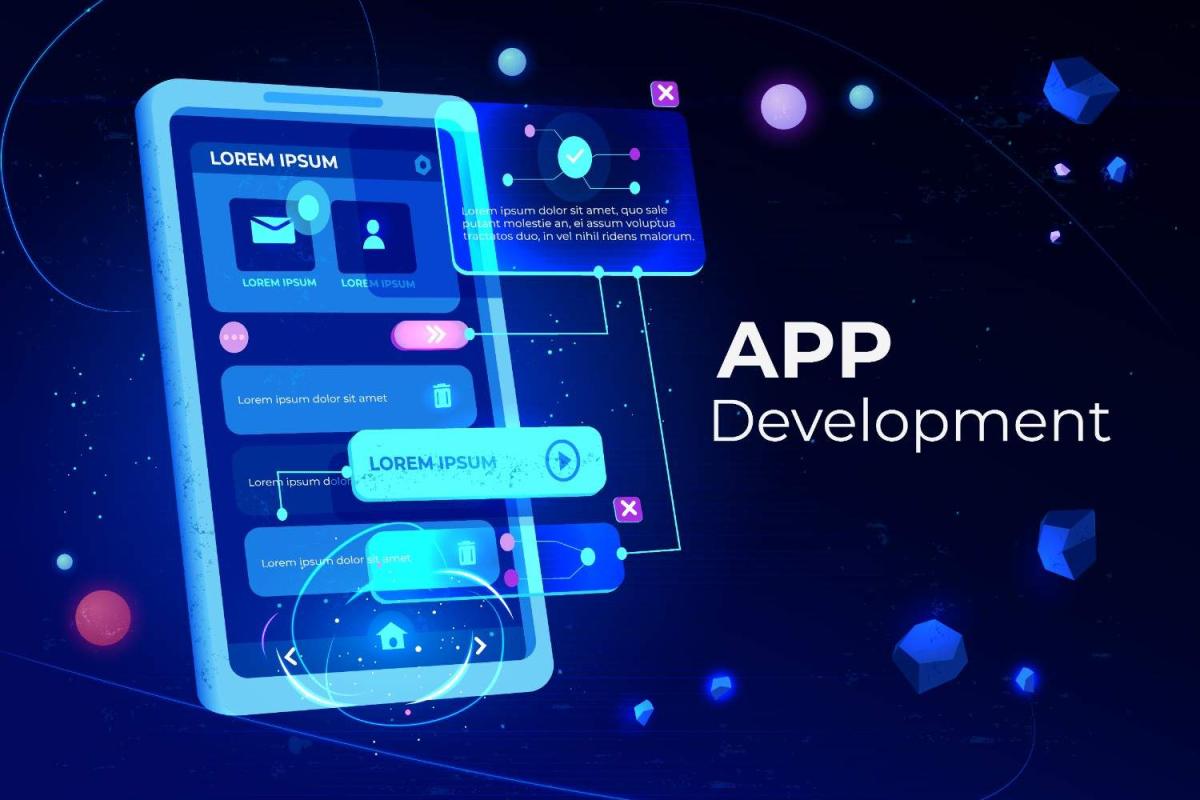The Future Of Nearshore Mobile App Development: Trends And Predictions For 2025 & Beyond
Mobile app development is evolving at a rapid pace, and businesses worldwide are seeking faster, more cost-efficient, and high-quality solutions to meet user demands. One approach that has gained immense traction over the last few years is nearshore mobile app development. By collaborating with development teams in geographically closer regions, businesses can cut costs, improve communication, and accelerate delivery times.
As we step into 2025 and beyond, this model is expected to grow even stronger—shaped by technological advancements, changing customer demands, and global economic shifts. In this blog, we’ll explore the future of nearshore development, the key trends reshaping it, and what businesses should expect in the years ahead.
Why Nearshore Mobile App Development Matters More Than Ever
Globalization and remote work have eliminated geographical barriers, but collaboration challenges, time zone gaps, and rising costs with offshore outsourcing remain significant issues. Nearshore development solves these by offering:
- Proximity in time zones for real-time collaboration.
- Cultural alignment for smoother workflows.
- Lower travel costs and the ability to meet in person when needed.
- High-quality talent pools at competitive rates.
These benefits make nearshore development a strategic choice for companies that want to combine cost efficiency with agility. In 2025 and beyond, as the demand for mobile-first business solutions skyrockets, this approach will become even more critical.
Emerging Trends in Nearshore Mobile App Development
1. AI-Driven Development and Automation
Artificial Intelligence (AI) is transforming how apps are built. From AI-powered coding assistants to intelligent debugging tools, developers are increasingly relying on automation to speed up delivery without sacrificing quality. Nearshore teams are leveraging AI not only for coding but also for predictive analytics, personalization, and advanced testing.
By 2025, AI integration in app development will be the standard, helping businesses reduce time-to-market while delivering smarter applications.
2. Rise of Low-Code and No-Code Platforms
The demand for rapid app development has led to the rise of low-code/no-code platforms. These allow businesses to create functional apps without deep technical expertise. Nearshore teams are expected to specialize in these platforms, enabling them to deliver prototypes and MVPs (Minimum Viable Products) in record time.
While these platforms won’t replace traditional coding for complex solutions, they’ll play a crucial role in accelerating development cycles, especially for startups and enterprises testing new ideas.
3. Cross-Platform and Hybrid Frameworks
As businesses aim to reach both Android and iOS users without doubling development costs, frameworks like Flutter and React Native will dominate nearshore projects. These allow for shared codebases while ensuring native-like performance.
In 2025, expect nearshore mobile app development to focus heavily on cross-platform apps, reducing costs while improving scalability and speed.
4. Cloud-Native Mobile Apps
Cloud computing has become the backbone of digital transformation, and mobile apps are no exception. Nearshore teams are increasingly building cloud-native applications that seamlessly integrate with platforms like AWS, Azure, and Google Cloud.
This approach enables better scalability, security, and real-time data accessibility—crucial for industries like healthcare, finance, and retail. In the future, most enterprise-level mobile solutions will be designed with cloud-first strategies.
5. Focus on Cybersecurity and Compliance
With data breaches on the rise, security has become non-negotiable. Governments worldwide are tightening regulations on data privacy and user protection, making compliance a top priority.
Nearshore development teams, particularly those in regions with strong regulatory frameworks, are investing heavily in cybersecurity best practices—ranging from end-to-end encryption to AI-based threat detection. This ensures businesses can confidently launch apps without worrying about data vulnerabilities.
6. Integration of Extended Reality (AR & VR)
From retail to education, AR (Augmented Reality) and VR (Virtual Reality) are transforming how businesses engage with users. Nearshore developers are experimenting with immersive technologies to create engaging customer experiences.
By 2025, we can expect more businesses to adopt AR and VR in mobile apps—whether it’s for virtual shopping, interactive learning, or immersive entertainment experiences.
7. 5G-Enabled Applications
The global rollout of 5G networks is enabling faster data transfer, ultra-low latency, and seamless streaming experiences. Nearshore teams are already building apps optimized for 5G capabilities, particularly in areas like gaming, video conferencing, and IoT integration.
Over the next decade, 5G will reshape app performance expectations, and nearshore development will play a pivotal role in helping businesses leverage this technology quickly.
8. Sustainable and Green Tech Development
Sustainability has become a global priority. Energy-efficient coding practices, green data centers, and eco-conscious app design are becoming integral parts of software development. Nearshore companies in regions with strong environmental commitments will be well-positioned to lead this transformation.
Mobile apps of the future will not only be fast and secure but also energy-conscious, reducing their carbon footprint.
9. Personalized and AI-Enhanced User Experiences
User expectations are shifting toward hyper-personalization. Through AI and machine learning, nearshore teams are delivering apps that adapt to user behavior in real-time. Personalized recommendations, voice assistants, and predictive features will become standard.
In 2025 and beyond, personalization will no longer be a differentiator—it will be the baseline for successful apps.
Predictions for the Future of Nearshore Mobile App Development
Looking ahead, here are some bold predictions for how nearshore development will evolve:
1. AI Will Automate 40% of Development Workflows
By leveraging AI for coding, testing, and optimization, nearshore teams will deliver apps at unprecedented speed.
2. Cross-Border Tech Hubs Will Grow
Collaboration between neighboring countries will create regional tech hubs, offering clients a diverse pool of expertise.
3. Blockchain Integration Will Rise
With the growing importance of transparency and security, blockchain-enabled apps will become more common in industries like finance, supply chain, and healthcare.
4. Industry-Specific Solutions Will Dominate
Instead of one-size-fits-all apps, businesses will seek industry-specific solutions developed by nearshore teams with domain expertise.
5. Custom Software Development for Enterprise Will Expand
Large enterprises will increasingly seek tailored solutions from nearshore partners. At FX31 Labs, for example, we provide custom software development for enterprise, helping businesses create scalable and secure mobile solutions aligned with their unique needs.
Why Businesses Should Bet on Nearshore Development in 2025
The future of mobile applications will be shaped by speed, adaptability, and innovation. Nearshore development offers businesses the perfect balance of cost savings, collaboration, and access to top talent.
Whether it’s adopting new technologies like 5G and AR/VR, focusing on cybersecurity, or delivering personalized user experiences, nearshore teams are ready to help businesses stay ahead in a competitive digital landscape.
Moreover, enterprises will find nearshore partnerships particularly valuable as they balance agility with the complexity of large-scale app development. The ability to work closely with a team that understands cultural nuances and operates within similar time zones will prove to be a game-changer.
Final Thoughts
The future of nearshore mobile app development is bright, fueled by emerging technologies and shifting business needs. Companies that embrace this model will benefit from faster delivery, stronger collaboration, and innovative solutions that keep them competitive in 2025 and beyond.
From AI-driven workflows to cloud-native designs and sustainable practices, nearshore development is not just a cost-saving strategy—it’s the future of mobile app innovation.
As enterprises continue to demand scalability and security, services like custom software development for enterprise will also play a pivotal role in shaping this landscape. Nearshore partners that embrace these trends will be the ones driving digital transformation in the years to come.

